- Home
- Tom Clancy
Carrier: A Guided Tour of an Aircraft Carrier Page 17
Carrier: A Guided Tour of an Aircraft Carrier Read online
Page 17
There are other hazards as well. In fact, the flight deck of a modern aircraft carrier is arguably the most dangerous workplace in the world. Aircraft are constantly threatening to either suck flight deck personnel into their engines, or blow them off of the deck into the ocean. For this reason, the entire perimeter of the flight deck and the elevators is rigged with safety nets. In addition, everyone on the flight deck also wears a “float coat,” which is an inflatable life jacket with water-activated flashing strobe light, and a whistle to call for help—just in case the safety nets don’t catch you. Standard flight deck apparel also includes steel-toed boots, thick insulated fabric gloves, and goggles (in case a fragment of non-skid or some foreign object/ debris—FOD—is blown into your face).
Flight deck personnel aboard the USS George Washington (CVN-73).
JOHN D. GRESHAM
Each float coat and cranial is color-coded by job. Under the float coats, deck crews also wear jerseys—heavy, long sleeved T-shirts—of the same color as the float coat (though they may be a different color from the cranials). These color-code combinations are universal aboard Navy ships. Here is what they mean:
DECK PERSONNEL IDENTIFICATION GUIDE
For example, only sailors wearing purple coats, jerseys, and cranials are allowed to handle fuel and other flammable fluids on deck (they are nicknamed the “grapes”).
Keeping an eye on flight-deck operations is a vital task. Up on the island, observers constantly watch the position and flow of planes, personnel, and equipment around the deck. Any deviation from standard procedures or safety rules calls down a sharp and angry rebuke over the flight deck loudspeaker (loud enough to hear through your cranial—and that is really LOUD) telling you exactly what you must do RIGHT NOW! To help these commands make sense, there is a standard set of coordinates and definitions for the various parts of the flight deck. For example, the catapults are numbered from 1 through 4 in order, starboard to port, bow to stern. The elevators are numbered, with 1 and 2 ahead of the island on the starboard side, number 3 just aft, and number four on the port side aft. The jet blast deflectors (JBDs) are matched to the catapults, 1 through 4. The arresting wires are also numbered, running from number 1 farthest aft, to number 4 up forward. Areas of the deck also have specific names, so that when an observer or lookout yells out a warning, he can direct other eyes to it without delay. Some examples include:• The “Crotch”—The point where the roughly 14° landing deck “Angle” ends and the port bow begins.
• The “Junkyard”—The area at the base of the island aft. Here tractors, forklifts, a wrecking crane, and the world’s smallest fire truck (collectively known as “yellow gear” even though some are now painted white) are parked, always ready to move when needed.
• The “Hummer Hole”—The area just forward of the Junkyard. Here the E-2C Hawkeyes (nicknamed “Hummers”) and their cargo-carrying cousins, the C-2 Greyhounds, are parked.
• The “Street”—The “ Street” is up on the bow in the area between Catapults 1 and 2; the forward catapult control pod is located there.
• The “Rows”—Also on the bow are the “1 Row” and “2 Row.” These are the zones outboard of Catapults 1 and 2 and are normally used as parking areas for the F/A-18 Hornets when a landing event is active.
• The “Finger”—A narrow strip of deck just aft of Elevator 4, with parking space for a single plane.
Working in this noisy, hot, and dangerous world is the job of some of the bravest young men and women you will ever meet. Most are under twenty-five; and some look so naive (or so scary), you might not trust them to valet park your car at a restaurant. Yet the Navy trusts them to safely handle aircraft worth several billion dollars, not to mention the infinitely precious lives of air crews, each representing millions of dollars in training and experience.
Theirs is a world of extremes. For up to eighteen hours a day, they’re subjected to noise that would deafen if not muffled; heat and cold that would kill if not insulated. They are surrounded by explosives, fuel, and other dangerous substances,36 and are frequently buffeted by winds of over sixty knots. For this, they receive a special kind of respect and a “hazardous duty” bonus (in 1998, about $130 per month) in addition to their sea pay. These young men and women know their work makes flying aircraft on and off the boat possible, and they take quiet pride in this dirty, dangerous job up on “the roof.” Because of the extreme noise, a richly expressive sign language is used to direct operations on the flight deck. Using a series of common and easily understood hand signals, the deck crew personnel tell each other how to move aircraft and load bombs and equipment, and warn each other of emergencies. They constantly watch out for each other, for only the brother or sister sailor looking out for you keeps you safe. All of these efforts are dedicated to just two basic tasks: the launching and landing of aircraft. Let’s now look at how it is done in somewhat greater detail.
A top view of an improved Nimitz-class (CVN-68) nuclear-powered aircraft carrier.
JACK RYAN ENTERPRISES, LTD., BY LAURA DENINNO
If you move aft from the bow down the “Street,” you walk between the two bow catapults, each as long as an American football field. And there is a similar catapult arrangement on the landing “angle” on the port side. Most of the machinery for each C13 Mod. 1 catapult is concealed under the flight deck: two slotted cylinders in a long steel trough, each with a narrow gap along the top. Overlapping synthetic rubber flangles cover and seal the gaps. In each cylinder is a piston, with a lug projecting through the sealing strips on top. Each of these lugs leads to a small crablike fixture called a “shuttle,” which is up on the flight deck.
When an aircraft is ready to launch, it is maneuvered into position under the guidance of a plane handler. When the nosewheel is just behind the shuttle, a metal attachment on the gear strut, called a towbar, is lowered into a slot on the shuttle. Meanwhile, the Jet Blast Deflector (JBD) just aft of the plane is raised, and another mechanical arm is attached to the rear of the nose gear strut with a device called a “holdback.”37 This allows the aircraft to run its engines up to full power, far beyond the ability of the plane’s brakes to keep it on the deck. In this way, the bird will have a considerable forward thrust even before it starts moving. Each aircraft type in the wing has its own special color-coded holdback, to prevent them from being used mistakenly on the wrong bird. The exceptions are the F-14 Tomcat and F/ A-18 Hornet, which have permanent holdback devices built into their nosewheelgear struts.
The nose gear of an F/A-18C Hornet on the #1 Catapult of the USS George Washington (CVN-73). The forward towbar is linked to the catapult shuttle, and the holdback device is in position.
JOHN D. GRESHAM
Once the aircraft is properly hooked up by one of the green-shirted catapult crewmen, another “green shirt” holds up a chalkboard with the plane’s expected takeoff weight written on it for the pilot and catapult officer (down in the catapult control pod) to see. If both agree that the number is correct (confirmed by hand signals), then the catapult officer (known as the “shooter”) begins to fill the twin pistons with a pressurized charge of saturated steam from the ship’s reactor plant.38 The steam pressure is carefully regulated to match the takeoff weight of the aircraft, the speed of the wind over the deck (this is the natural wind speed plus the speed of the ship), and other factors like heat, air pressure/density, and humidity. This has to be very precise. Too much pressure will rip the nosewheel gear out of the plane, while too little will cause a “cold shot.” In a cold shot, the aircraft runs down the deck and never reaches takeoff speed; the catapult then hurls it into the water ahead of the onrushing carrier.39 At best, the crew will eject and the aircraft will be lost. At worst, both the aircraft and flight crew will be lost. As might be imagined, catapult officers (who are themselves veteran carrier aviators) take this highly responsible job quite seriously.
Once the pressure is at the desired level, there is a final check of the aircraft by the green shirts
. If all appears to be at readiness, the catapult officer signals this to the pilot. The pilot selects the proper engine setting (usually maximum power or afterburner), snaps a salute back to the catapult officer in the pod, and braces for what is about to come. At that point, the catapult “shooter” hits a button in the control pod, and the twin cylinders are released. This snaps the holdback and throws the aircraft down the catapult track. The pilot/crew is hit with several times the force of gravity (what pilots call “G” forces), and their eyes are driven back into their sockets. Approximately one hundred yards/ninety meters and two seconds later, the towbar pops out of the shuttle, and the aircraft is on its own. Having achieved flying speed (usually around 150 knots), the pilot has now gained control of the airplane (that is, he or she can actually fly it).
Back on deck, a cable and pulley system retracts the shuttle to its start position, and the cycle repeats. A well-trained crew can complete this process in less than two minutes. A normal launch sequence using all four catapults can put an airplane into the air every twenty to thirty seconds. This means that launch events for several dozen aircraft can take less than fifteen minutes from start to finish. However, since the aircraft just launched will be back to land in only a couple of hours, the timing of what gets done next can be critical.
Configuring the flight deck for a landing “event” requires that the deck be “respotted,” with as many aircraft as possible moved forward. In most cases, these are parked on Rows 1 and 2, so that the “angle” will be clear for returning aircraft; and this means that Catapults 1 and 2 are now blocked and unavailable for use. While it is theoretically possible to launch aircraft during landing operations, this is rarely done. To do so would require much of the air wing to be struck below to the hangar deck, a time-consuming and tiring exercise for the deck crews. In fact, carrier captains like to use the aircraft elevators as little as possible, since these constitute part of the flight deck and parking area for aircraft when they are in the “up” position. It’s hard to find anything more precious to a carrier skipper than flight deck space, and even the four and a half acres on a Nimitz-class flattop seems small when filled with airplanes, ordnance, equipment, and people.
The flight deck can not only get crowded, it can easily become dangerous. For this reason aircraft that are not actually taking off or landing are parked and chained down as quickly as possible. Chaining down is also necessary because a slight list on a slick deck can send an aircraft sliding around like a rogue hockey puck on an ice rink. In fact, almost everything on deck is chained down when it is not in use, including the low-rise firefighting and aircraft tractor vehicles. Normally, as soon as an aircraft is shut down and parked, a crew of strong-backed young blue shirts moves in to attach tie-down chains to some of the thousands of tie-down points imbedded in the plating of the flight deck.
On the port side aft is a sponson holding what is called the “Lens.” This is a stabilized (against the motion of the ship) system of lights and directional lenses, designed to provide approaching pilots with a visual glide path down to the deck. If an approaching aircraft has the proper attitude and sink rate, then the pilot sees an amber light—or “meatball”—from the system. If the pilot can keep the “ball” centered (with a row of green lights) all the way down (any offset from the proper attitude shows the pilot a row of “red” lights), then it should put him down in the perfect spot for a landing on the deck aft.
Once the flight deck has been respotted for the coming landing event, and the ship has once again come into the wind, things again get exciting. Modern carrier aircraft are too heavy and their stall speeds are too high to possibly land in the roughly 500 feet/152 meters of space on the flight deck. In fact, the only way to get a high-performance airplane onto a carrier deck is to literally fly it to a “controlled” crash, and stop it forcibly before it falls into the sea. The lens system and other special landing instruments (some aircraft even have an automatic landing system) are useful aids, but pilots usually need additional help. This formidable task is the job of a lot of very special equipment and is overseen by the Landing Signals Officers (LSOs). Back in the old days of propeller-driven planes and the early jets, LSOs were the only landing aid for pilots. They did their job with nothing more than a pair of lighted paddles (to show the pilots their landing attitude) and a few hand signals. LSOs today do their job from a small platform on the port side aft, and it is there that we now will go to get a perspective on the fine art of a carrier landing.
Landing a carrier aircraft starts in the aircraft cockpit, when the pilot makes the break into the ship’s landing pattern. The pattern itself is controlled by the Carrier Air Traffic Control Center (CATCC) located one level down from the flight deck. The CATCC is a miniature of what you would find at any major airport, and it functions in exactly the same way. The controller’s job is to “stack” the aircraft, prioritize them into an oval-shaped pattern about a mile wide and four miles long around the port side of the carrier, and “stagger” them, so the LSO has the necessary time to bring each aboard. (They can land an aircraft about every thirty seconds under good conditions.) The aircraft in the pattern are prioritized by their “fuel state,” a polite way of saying that the first planes to be brought aboard are the ones that are about to fall into the ocean from fuel starvation. Just to be sure this does not happen, the carrier usually has an airborne tanker overhead during flight operations to refuel airplanes too close to the Empty point on their fuel gauges.
When the landing event has been properly organized, the “Lens” is turned on, and the first pilot in the pattern makes the “break” out of the pattern to line up on the stern of the carrier. During the “downwind” leg of the pattern, the pilot drops the plane’s landing gear, tailhook, and flaps, makes sure the radio is set up on the LSO frequency, and turns left toward the boat. Assuming all this has been done properly, the aircraft should start its final approach at eight hundred feet altitude, about three-quarters of a mile from the stern of the carrier, and just fifteen seconds from touchdown.
Detail of a landing wire and capstan on the USS George Washington (CVN-73).
JOHN D. GRESHAM
As the aircraft finishes its break, the LSO orders the pilot over the radio to “Call the ball!” This tells the pilot to let the LSO know that he has spotted the amber “meatball” of the landing system. If the pilot does see it, he or she calls “Roger ball!” back to the LSO to confirm that. At this point, the final ten-second dash to the deck is on. On the LSO platform, the LSO and an assistant are watching and judging the aircraft’s attitude. Highly experienced pilots themselves, LSOs are expert judges of all this. In his or her hand, the LSO holds what is known as the “pickle.” This controls a series of lights near the LSO platform, which are visible to aircraft approaching the stem. As long as the aircraft continues properly on course, the pilot gets a green “OK” light. But the LSO can also activate “more power” and “wave off” lights with the “pickle.” The LSO can also coach the pilot by radio, but this is not normally done. Since an enemy could intercept radio signals in wartime conditions, “emissions control” procedures (called EMCOM Alpha in its most extreme form) dictate that combat landing operations be done only with lights. If the aircraft is set up properly, it should now be about thirty feet over the fantail, with airspeed of around 130 knots/240 kph, and a decided nose-up attitude. At this point, the pilot and LSO have done their part of the job, and it is the turn of machinery to finish it.
Handling this task is the ship’s arresting gear system, located in the middle of the 14° angle aft. Stretched across the deck are four braided steel cables (called “wires” by the crew), numbered 1 through 4, from rear to front. The wires are spaced about fifty feet apart, and each is hooked to a pair of hydraulic cylinders located one deck below. If the pilot and LSO have set the landing up properly, the aircraft should hit the deck in the roughly two-hundred-foot/sixty-one-meter-by-fifty-foot/fifteen-meter rectangle formed by the wire system. If this hap
pens, the tailhook hanging from the rear of the aircraft should snag one of the wires. If a successful “trap” occurs, the aircraft and hook pull the wire out of its spools belowdecks, and the hydraulic cylinders slow the aircraft to a stop in about 300 feet/91.4 meters, in just two seconds. The crew is then thrown forward in their straps, and lots of negative (forward) “Gs” nearly push their eyeballs out of their sockets.
Once the aircraft is safely aboard, a green-shirted deck crew member called a “hook runner” clears the landing wire from the hook, while a “blue shirt” plane handler starts directing the pilot to taxi forward out of the landing area. When the aircraft is clear of the angle, the arresting cable is retracted and made ready for the next landing. While all this is happening, the LSO is writing down a “score” for each pilot’s landing. They grade two factors. First, the general way the pilot actually flew the approach and landing. An “OK” means that this was done safely and to accepted standards. Second, the wire the pilot “snagged.” As we saw earlier in the first chapter, the favored target is wire number 3, which provides the safest landing conditions and the least strain on the aircraft. Landings on wires 2 and 4, while acceptable, merit a lower score; but hitting wire number 1 is considered dangerous and usually brings the pilot counseling from the LSO.
Each pilot’s landing scores are posted on what is known as the “greenie” board down in the squadron ready room for all to see. These scores are accumulated, and by the end of an entire cruise, a “Top Hook” award is given to the pilot with the best landing record. The scores also frequently affect the ratings of the pilot’s airmanship, which affects their future promotion hopes. Great “Hooks” may go to test pilot school or become instructors, while those with lower scores may never fly off a ship again.

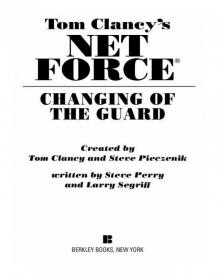 Changing of the Guard
Changing of the Guard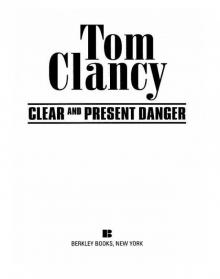 Clear and Present Danger
Clear and Present Danger Hounds of Rome
Hounds of Rome Breaking Point
Breaking Point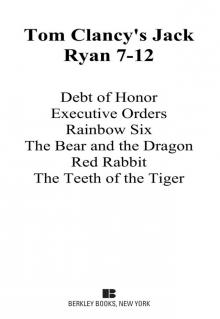 Tom Clancy's Jack Ryan Books 7-12
Tom Clancy's Jack Ryan Books 7-12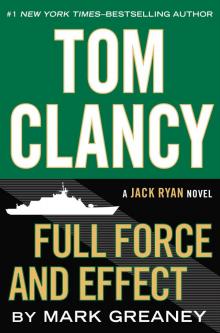 Full Force and Effect
Full Force and Effect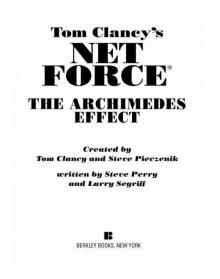 The Archimedes Effect
The Archimedes Effect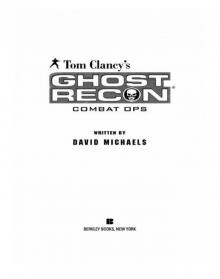 Combat Ops
Combat Ops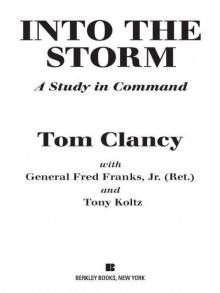 Into the Storm: On the Ground in Iraq
Into the Storm: On the Ground in Iraq Under Fire
Under Fire Point of Impact
Point of Impact Red Rabbit
Red Rabbit Rainbow Six
Rainbow Six The Hunt for Red October
The Hunt for Red October The Teeth of the Tiger
The Teeth of the Tiger Conviction (2009)
Conviction (2009)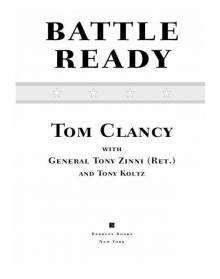 Battle Ready
Battle Ready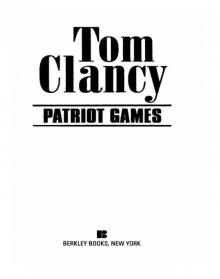 Patriot Games
Patriot Games The Sum of All Fears
The Sum of All Fears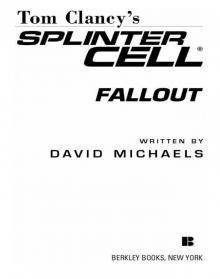 Fallout (2007)
Fallout (2007) Red Storm Rising
Red Storm Rising The Cardinal of the Kremlin
The Cardinal of the Kremlin Executive Orders
Executive Orders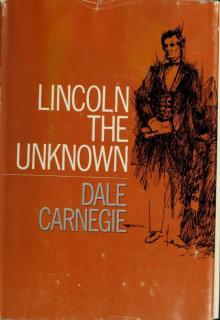 Lincoln, the unknown
Lincoln, the unknown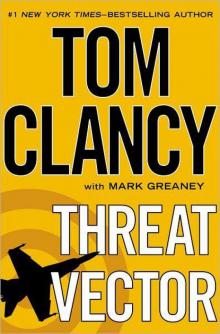 Threat Vector
Threat Vector The Hunted
The Hunted Shadow Warriors: Inside the Special Forces
Shadow Warriors: Inside the Special Forces End Game
End Game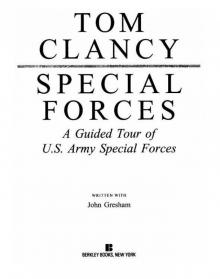 Special Forces: A Guided Tour of U.S. Army Special Forces
Special Forces: A Guided Tour of U.S. Army Special Forces Locked On
Locked On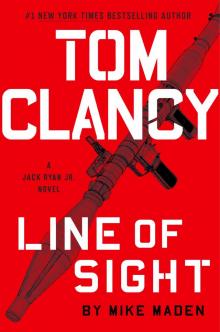 Line of Sight
Line of Sight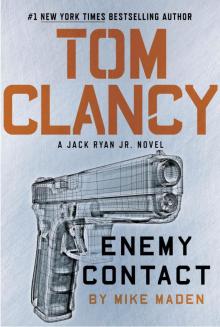 Tom Clancy Enemy Contact - Mike Maden
Tom Clancy Enemy Contact - Mike Maden Fighter Wing: A Guided Tour of an Air Force Combat Wing
Fighter Wing: A Guided Tour of an Air Force Combat Wing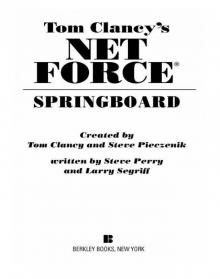 Springboard
Springboard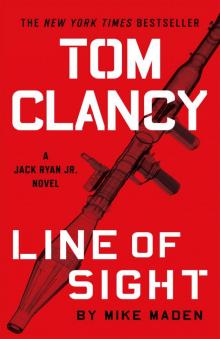 Line of Sight - Mike Maden
Line of Sight - Mike Maden EndWar
EndWar Dead or Alive
Dead or Alive Tom Clancy Support and Defend
Tom Clancy Support and Defend Checkmate
Checkmate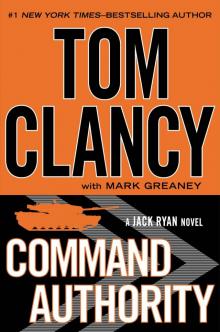 Command Authority
Command Authority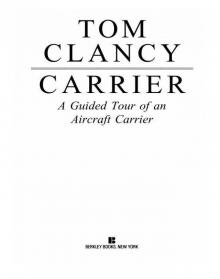 Carrier: A Guided Tour of an Aircraft Carrier
Carrier: A Guided Tour of an Aircraft Carrier Blacklist Aftermath
Blacklist Aftermath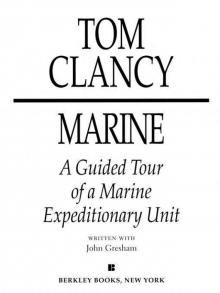 Marine: A Guided Tour of a Marine Expeditionary Unit
Marine: A Guided Tour of a Marine Expeditionary Unit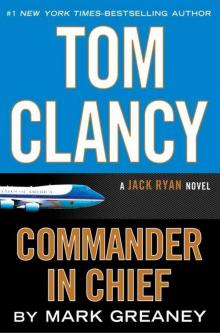 Commander-In-Chief
Commander-In-Chief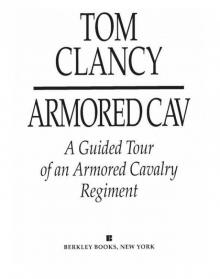 Armored Cav: A Guided Tour of an Armored Cavalry Regiment
Armored Cav: A Guided Tour of an Armored Cavalry Regiment Tom Clancy's Jack Ryan Books 1-6
Tom Clancy's Jack Ryan Books 1-6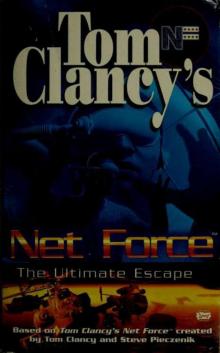 The Ultimate Escape
The Ultimate Escape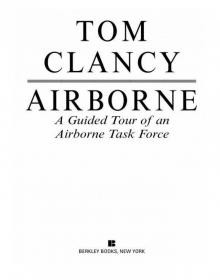 Airborne: A Guided Tour of an Airborne Task Force
Airborne: A Guided Tour of an Airborne Task Force Debt of Honor
Debt of Honor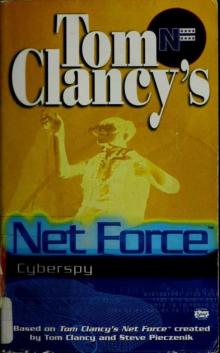 Cyberspy
Cyberspy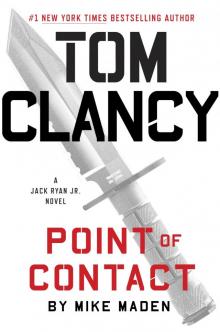 Point of Contact
Point of Contact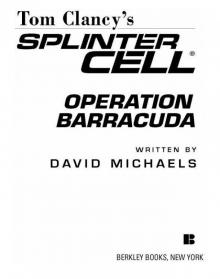 Operation Barracuda (2005)
Operation Barracuda (2005)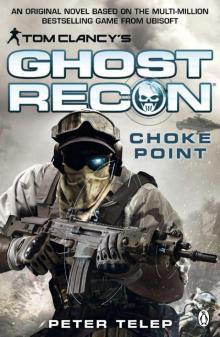 Choke Point
Choke Point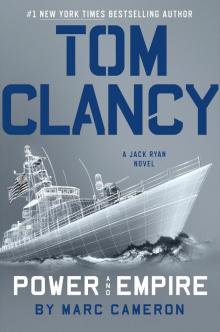 Power and Empire
Power and Empire Every Man a Tiger: The Gulf War Air Campaign
Every Man a Tiger: The Gulf War Air Campaign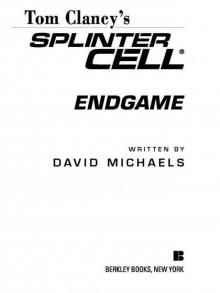 Endgame (1998)
Endgame (1998)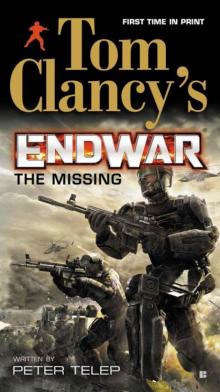 EndWar: The Missing
EndWar: The Missing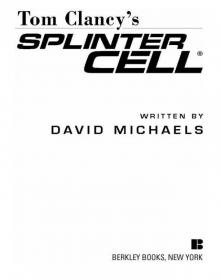 Splinter Cell (2004)
Splinter Cell (2004) The Great Race
The Great Race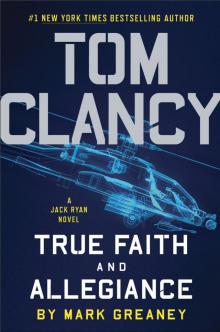 True Faith and Allegiance
True Faith and Allegiance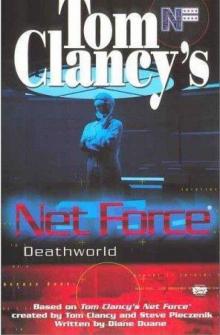 Deathworld
Deathworld Ghost Recon (2008)
Ghost Recon (2008)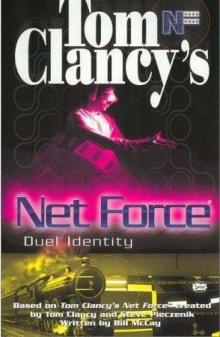 Duel Identity
Duel Identity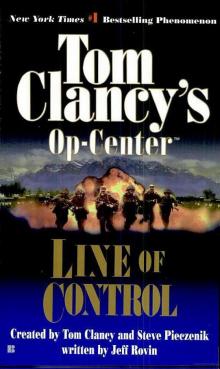 Line of Control o-8
Line of Control o-8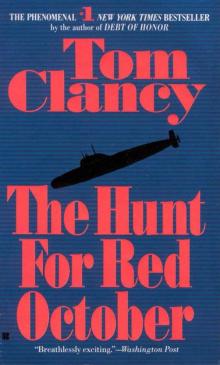 The Hunt for Red October jr-3
The Hunt for Red October jr-3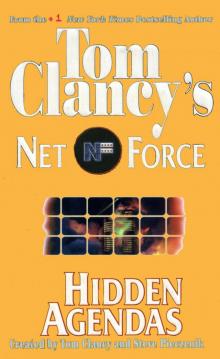 Hidden Agendas nf-2
Hidden Agendas nf-2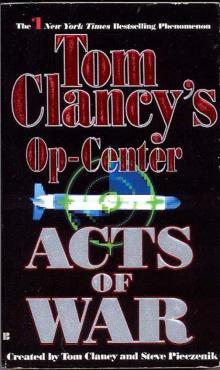 Acts of War oc-4
Acts of War oc-4 Ruthless.Com pp-2
Ruthless.Com pp-2 Night Moves
Night Moves The Hounds of Rome - Mystery of a Fugitive Priest
The Hounds of Rome - Mystery of a Fugitive Priest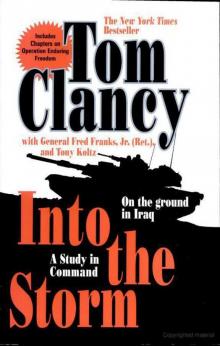 Into the Storm: On the Ground in Iraq sic-1
Into the Storm: On the Ground in Iraq sic-1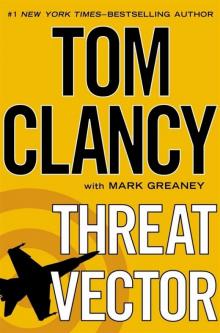 Threat Vector jrj-4
Threat Vector jrj-4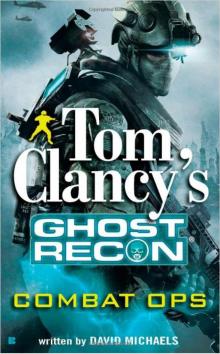 Combat Ops gr-2
Combat Ops gr-2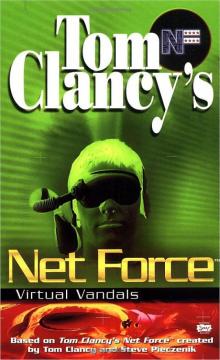 Virtual Vandals nfe-1
Virtual Vandals nfe-1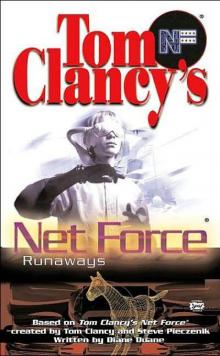 Runaways nfe-16
Runaways nfe-16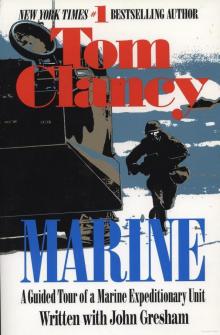 Marine: A Guided Tour of a Marine Expeditionary Unit tcml-4
Marine: A Guided Tour of a Marine Expeditionary Unit tcml-4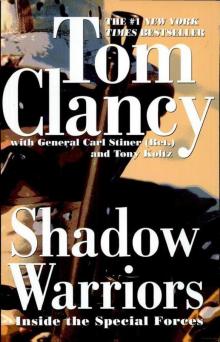 Shadow Warriors: Inside the Special Forces sic-3
Shadow Warriors: Inside the Special Forces sic-3 Jack Ryan Books 1-6
Jack Ryan Books 1-6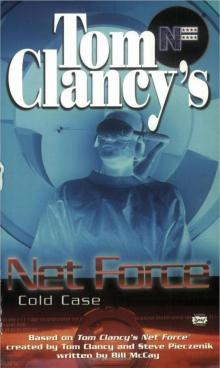 Cold Case nfe-15
Cold Case nfe-15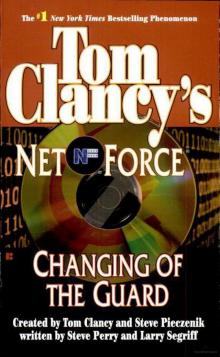 Changing of the Guard nf-8
Changing of the Guard nf-8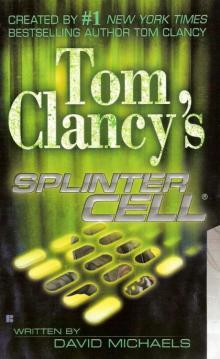 Splinter Cell sc-1
Splinter Cell sc-1 Battle Ready sic-4
Battle Ready sic-4 The Bear and the Dragon jrao-11
The Bear and the Dragon jrao-11 Fighter Wing: A Guided Tour of an Air Force Combat Wing tcml-3
Fighter Wing: A Guided Tour of an Air Force Combat Wing tcml-3 Patriot Games jr-1
Patriot Games jr-1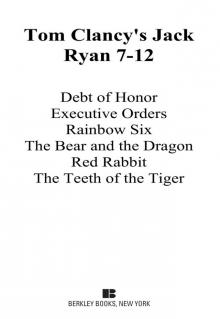 Jack Ryan Books 7-12
Jack Ryan Books 7-12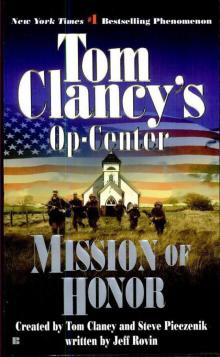 Mission of Honor o-9
Mission of Honor o-9 Private Lives nfe-9
Private Lives nfe-9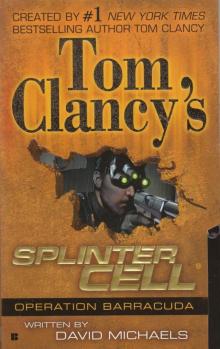 Operation Barracuda sc-2
Operation Barracuda sc-2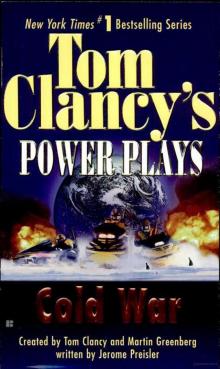 Cold War pp-5
Cold War pp-5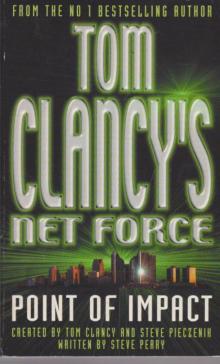 Point of Impact nf-5
Point of Impact nf-5 Red Rabbit jr-9
Red Rabbit jr-9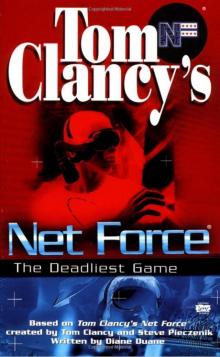 The Deadliest Game nfe-2
The Deadliest Game nfe-2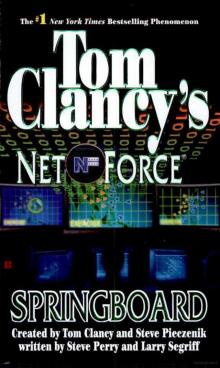 Springboard nf-9
Springboard nf-9 Safe House nfe-10
Safe House nfe-10 EndWar e-1
EndWar e-1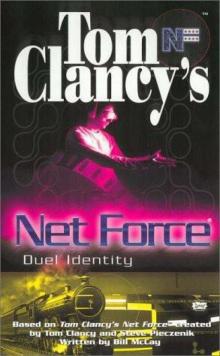 Duel Identity nfe-12
Duel Identity nfe-12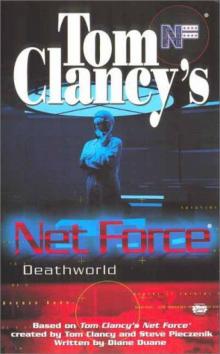 Deathworld nfe-13
Deathworld nfe-13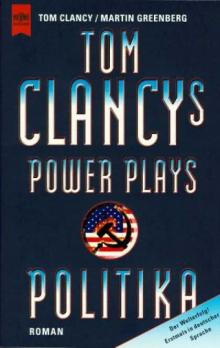 Politika pp-1
Politika pp-1 Rainbow Six jr-9
Rainbow Six jr-9 Tom Clancy's Power Plays 1 - 4
Tom Clancy's Power Plays 1 - 4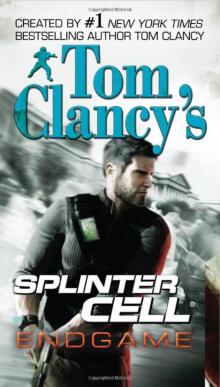 Endgame sc-6
Endgame sc-6 Executive Orders jr-7
Executive Orders jr-7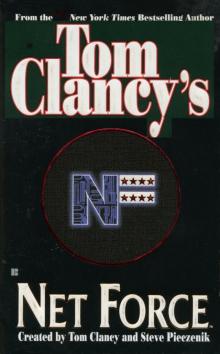 Net Force nf-1
Net Force nf-1 Call to Treason o-11
Call to Treason o-11 Locked On jrj-3
Locked On jrj-3 Against All Enemies
Against All Enemies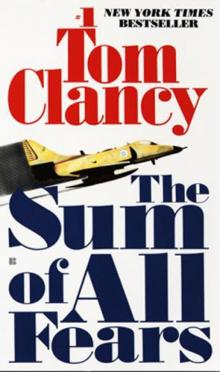 The Sum of All Fears jr-7
The Sum of All Fears jr-7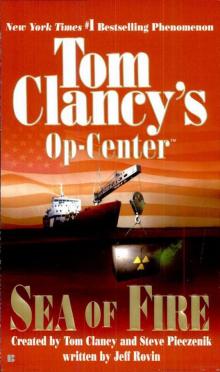 Sea of Fire o-10
Sea of Fire o-10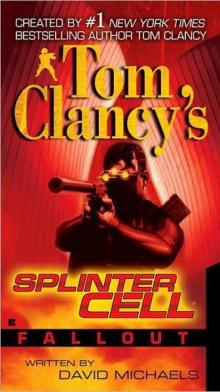 Fallout sc-4
Fallout sc-4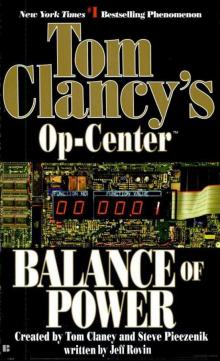 Balance of Power o-5
Balance of Power o-5 Shadow Watch pp-3
Shadow Watch pp-3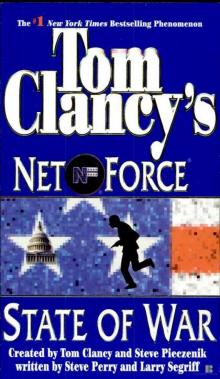 State of War nf-7
State of War nf-7 Wild Card pp-8
Wild Card pp-8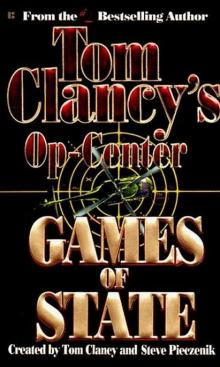 Games of State o-3
Games of State o-3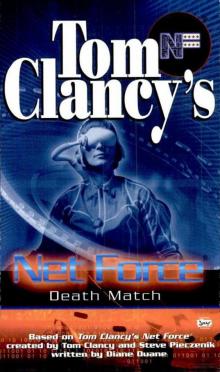 Death Match nfe-18
Death Match nfe-18 Against All Enemies mm-1
Against All Enemies mm-1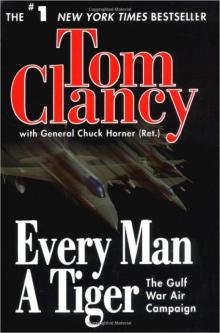 Every Man a Tiger: The Gulf War Air Campaign sic-2
Every Man a Tiger: The Gulf War Air Campaign sic-2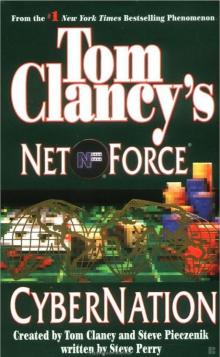 Cybernation nf-6
Cybernation nf-6 Support and Defend
Support and Defend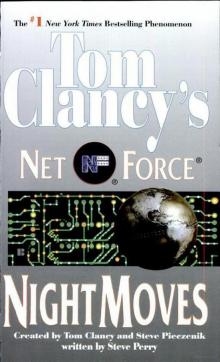 Night Moves nf-3
Night Moves nf-3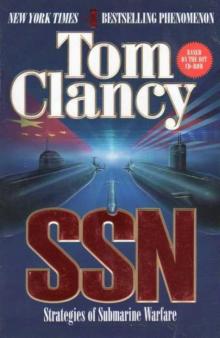 SSN
SSN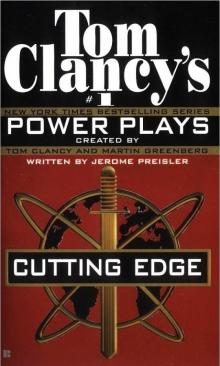 Cutting Edge pp-6
Cutting Edge pp-6 The Cardinal of the Kremlin jrao-5
The Cardinal of the Kremlin jrao-5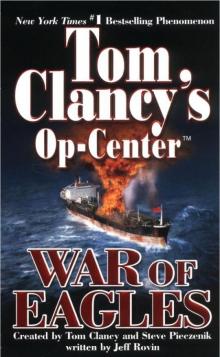 War of Eagles o-12
War of Eagles o-12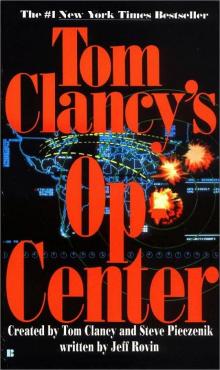 Op-Center o-1
Op-Center o-1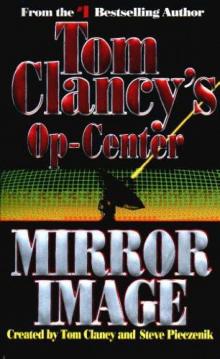 Mirror Image o-2
Mirror Image o-2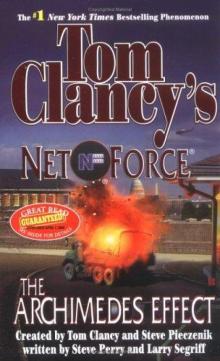 The Archimedes Effect nf-10
The Archimedes Effect nf-10 Teeth of the Tiger jrj-1
Teeth of the Tiger jrj-1 Bio-Strike pp-4
Bio-Strike pp-4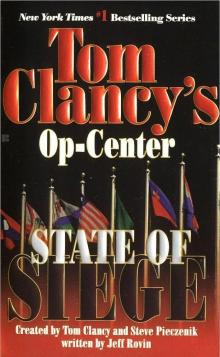 State of Siege o-6
State of Siege o-6 Debt of Honor jr-6
Debt of Honor jr-6 Zero Hour pp-7
Zero Hour pp-7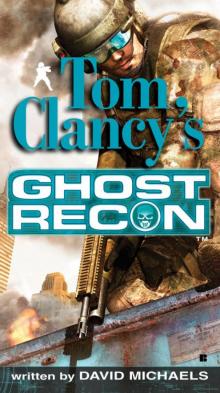 Ghost Recon gr-1
Ghost Recon gr-1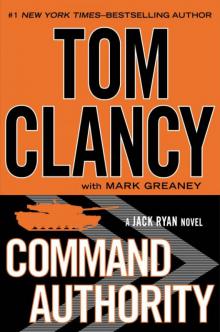 Command Authority jr-10
Command Authority jr-10 Tom Clancy's Power Plays 5 - 8
Tom Clancy's Power Plays 5 - 8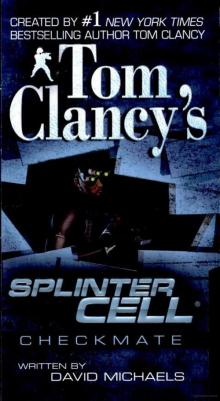 Checkmate sc-3
Checkmate sc-3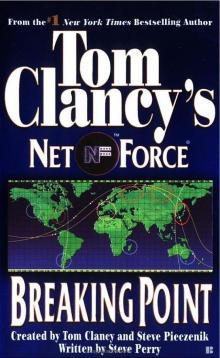 Breaking Point nf-4
Breaking Point nf-4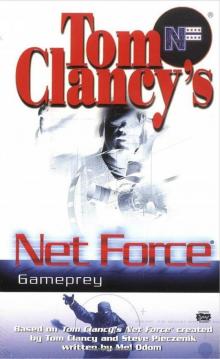 Gameprey nfe-11
Gameprey nfe-11 The Hunted e-2
The Hunted e-2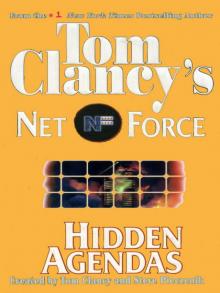 Hidden Agendas
Hidden Agendas Divide and Conquer o-7
Divide and Conquer o-7